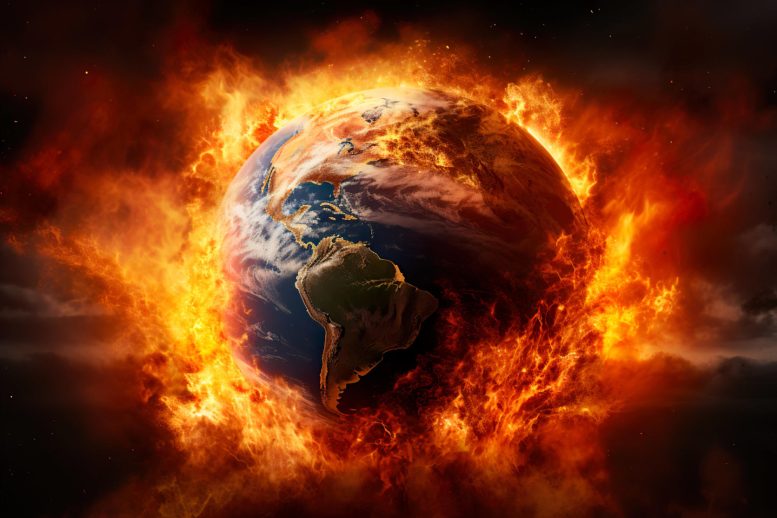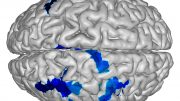
Researchers from Oregon State University have introduced a “restorative” pathway to mitigate climate change impacts, emphasizing a holistic approach that combines social and economic justice with environmental sustainability. This novel strategy contrasts with current models by focusing on reducing resource consumption and advocating for societal changes to address global warming and socio-economic disparities.
An international team of scientists led by Oregon State University researchers has used a novel 500-year dataset to frame a “restorative” pathway through which humanity can avoid the worst ecological and social outcomes of climate change.
In addition to charting a possible new course for society, the researchers say their “paradigm shifting” plan can support climate modeling and discussion by providing a set of actions that strongly emphasize social and economic justice as well as environmental sustainability.
Oregon State’s William Ripple, former OSU postdoctoral researcher Christopher Wolf, and collaborators argue their scenario should be included in climate models along with the five “shared socioeconomic pathways,” or SSPs, that are used by the U.N.’s Intergovernmental Panel on Climate Change.
“We understand that our proposed scenario may be a major challenge to implement given current trends in emissions, a lack of political will, and widespread social denial, but its merits can’t even be honestly debated if it’s not included in the suite of options,” said Ripple, distinguished professor of ecology in the OSU College of Forestry. “We’re arguing for radical incrementalism: achieving massive change through small, short-term steps. And we’re offering a much-needed contrast to many other climate scenarios, which may be more aligned with the status quo, which isn’t working.”
Data-Driven Restorative Pathway
Ripple and co-authors from the United States, the Netherlands, and Australia present their restorative pathway in a paper published in Environmental Research Letters. They say the pathway is inspired by a unique compilation of Earth system variables that vividly illustrate how humanity’s resource demands have exploded since 1850, indicating ecological overshoot.
“The supporting data underscore the urgent need for action,” said Wolf, now a scientist with Corvallis-based Terrestrial Ecosystems Research Associates. “The growth in human population, gross domestic product and energy consumption, primarily reliant on fossil fuels, has led to an extraordinary surge in greenhouse gas emissions, dramatically altering land use and triggering a massive biodiversity decline.”
The authors note that current climate change modeling relies on multiple assumptions and factors related to policy options and societal developments. An international team of climate scientists, economists, and energy systems modelers developed the SSPs, which are used to derive greenhouse gas emissions scenarios under different sets of policies that assume continued and significant GDP growth through 2100.
“The SSPs describe plausible developments that in the future would lead to different challenges for climate change mitigation and adaptation,” Wolf said. “They’re based on five narratives that describe alternative socioeconomic developments, some more sustainable than others. Our scenario focuses on reducing the consumption of primary resources to a level that keeps environmental pressures within planetary boundaries, with per capita GDP stabilizing over time.”
Addressing Climate Change, Biodiversity, and Inequality
Wolf, Ripple, and collaborators took a long-term look back at a range of variables: fossil fuel emissions, human population, GDP, land use, greenhouse gas concentrations, global temperature, vertebrate wildlife species abundance, income inequality, and meat production.
Collectively, the data paint a comprehensive picture of the profound changes Earth has undergone, say the authors, who include Jillian Gregg of Terrestrial Ecosystems Research Associates, Detlef P. van Vuuren with the Netherlands Environmental Assessment Agency and Manfred Lenzen of the University of Sydney.
“The income share variable extends back to 1820 and shows how the top 10% have consistently received at least 50% of all income, illustrating global economic inequality over the long term,” Ripple said. “The restorative pathway would represent a more equitable and resilient world with a focus on nature preservation as a natural climate solution; societal well-being and quality of life; equality and high levels of education for girls and women, resulting in low fertility rates and higher standards of living; and a rapid transition toward renewable energy.”
Unlike some of the current shared socioeconomic pathways, the restorative pathway does not rely on the development of carbon capture technologies, nor does it assume continued economic growth as the SSPs do.
“By prioritizing large-scale societal change, our proposed pathway could limit warming much more effectively than pathways that support rising resource consumption by wealthy nations,” Ripple said. “We aim to bend the curves on a wide range of planetary vital signs with a holistic vision for addressing climate change, biodiversity loss, and socioeconomic injustice. Our work presents a case for how humanity can embark on the journey of saving the world from these environmental and social crises.”
Reference: “An environmental and socially just climate mitigation pathway for a planet in peril” by William J Ripple, Christopher Wolf, Detlef P van Vuuren, Jillian W Gregg and Manfred Lenzen, 9 January 2024, Environmental Research Letters.
DOI: 10.1088/1748-9326/ad059e
In October 2023, Ripple, Wolf and 10 other U.S. and global scientists published research in BioScience that showed the Earth’s vital signs have worsened beyond anything humans have yet seen, to the point that life on the planet is imperiled.
Ripple is also the co-author of another BioScience paper, that examines climate change and the related biodiversity crisis from a cosmic perspective using “long-term planetary thinking,” he said.









Strogly recommend reading the 1987 Bruntland report “Our common future”.
1987: Brundtland Report
The Brundtland Report stated that critical global environmental problems were primarily the result of the enormous poverty of the South and the non-sustainable patterns of consumption and production in the North.Still time.
Whenever I read “social and economic justice as well as environmental sustainability” at the beginning of an article ostensibly about environmental issues, my BS detector goes off. There is no discussion of the cause of the changes, apparently because those advocating trying something new have decided they have special insights and there is no need for debate. One can’t reasonably expect to solve a problem if their understanding of the problem is flawed. It is common knowledge that the various Global Circulation Models (GCM) have always run warm. Just yesterday, SciTechDaily carried an article (Desert Paradox: Dry Regions Defy Climate Change Moisture Predictions) that demonstrates that the humidity in the atmosphere is not behaving in the manner that the GCMs assume.
A recent paper [ https://wires.onlinelibrary.wiley.com/doi/abs/10.1002/wcc.701 ] remarks:
“Large areas of climate zones have been found to be misclassified by the GCMs compared to the reference climate zones established by the observational data. Some early results showed that the Atmosphere–Ocean General Circulation Models fail to simulate the observed Köppen climate zones in 20–30% of the land area (Gnanadesikan & Stouffer, 2006), and the range is estimated to be 24–39% in Hanf et al. (2012). Phillips and Bonfils (2015) found that the CMIP5 simulations agree with the observational reference in at most 70% of the land area and based on the results of Zhang and Yan (2016) approximately 50–70%.”
That is to say that, all, except possibly the Russian GCMs, are doing a poor job of characterizing the extant climate zones, and can’t be expected to do any better for the future, other than by chance. Yet, people jump on the band wagon, uncritically accepting claims that they are sympathetic with because they align with their political beliefs.
That is no way to do science. The approach is like the classic joke, “Ready, Fire, Aim.”
Better get a move on if we are going to combine social justice with climate change policy. By 2030, according to Klaus Schwab and his globalist hencchmen, the masses will “own nothing, have no privacy and be happy”.
Or is this agenda, plugged nakedly for years, just another of those conspiracy theories (you know, the ones that end up being conspiracy facts)?
In the Nordic reseachers have collected data and modelled relationship between climate and CO2 for the last 10.000 years. This is based on old logs colled from swamps since ending of the last ice age. Recommended reading for Oregon Uni team too
More new world order, fascist, progressive, socialist propaganda. Hopefully the west won’t fall for it.
This is nothing but international socialism pretending to be science. All it proposes is restricting human activity which means poverty for everyone, but it will be “just” because they determine it so.